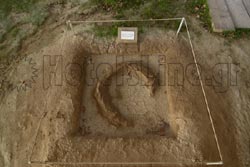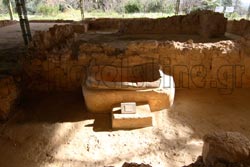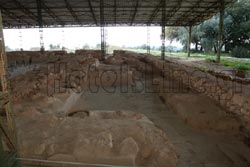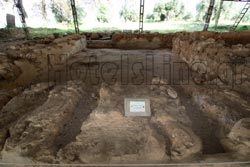In Pylos town of Messinia, on the hill of Epano Englianos, just 4 km from Chora village, the Palace of Nestor found, which is among the most important discoveries of Mycenaean Greece.
The excavations started in 1939 by the American archaeologist C.W. Blegen in a cooperation with the Greek archaeologist K. Kourouniotis - who identified the location of the prehistoric palace - and were finished after the Second World War.
The palace was built in the 13th century BC by King Nestor, who turned Pylos into the second largest city of the Mycenaean world after Mycenae.
The surrounding landscape was characterized as peaceful, something that contributed to the non-fortification, in contrast to other Mycenaean cities.
The palace complex consists of four buildings. The oldest, known as the Southwest building, is identical to the palace of Nileos, the Nestor's father.
The central building is the famous Palace of Nestor where, on the eastern side, the wine was housed. Below the main palace there was a former building, which was destroyed at the end of the 14th BC.
The Palace of Nestor was a two-storey building with large courtyards, storage rooms, bathrooms, stairwells, private rooms, drainage system. In addition, there were workshops, where they produced items for their own use and for exportation like guns, metal tools, wool and linen fabrics, pottery, etc.
The rooms were decorated with every kind of art. Impressive decorations were present not only on the walls but on the floor, too.
In 1952, the architect John Chadwick had decoded over 1000 clay tablets written in Linear B' script, whereby a lot of useful information came to light. Some of them said that this palace was the economic, administrative, political and religious center of Mycenaean.
The palace complex was destroyed by fire in 1200 BC in a period, which had been characterized by uprisings in the headquarters of the Mycenaean kingdoms.
|



 |